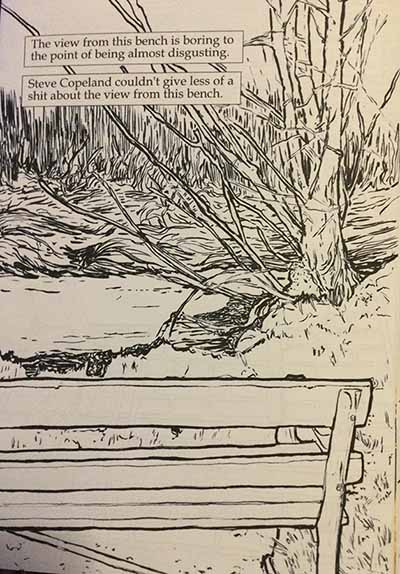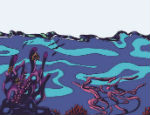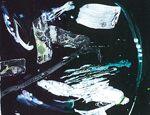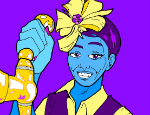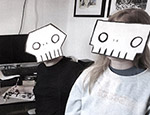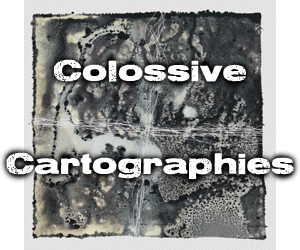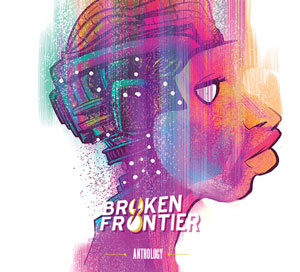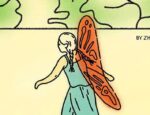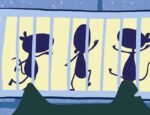I have long been an advocate for raising awareness of longer-form comics work-in-progress by releasing self-contained sections as self-published comics. The benefits are numerous but chiefly it alerts potential publishers to the project while also ensuring the artist doesn’t feel they are working entirely in isolation. Gareth A Hopkins has taken that route with his experimental (it wouldn’t be a Hopkins comic if it wasn’t) Rainlight Cope Aesthetic: Temporal Eructation, a chapter from a proposed graphic novel that Hopkins promises will follow “the intersecting lives of three men, at least one of whom gets turned into a dinosaur, and later into a unicorn.” Perhaps the oddest thing about that statement is that it actually feels quite subdued for a Hopkins story.
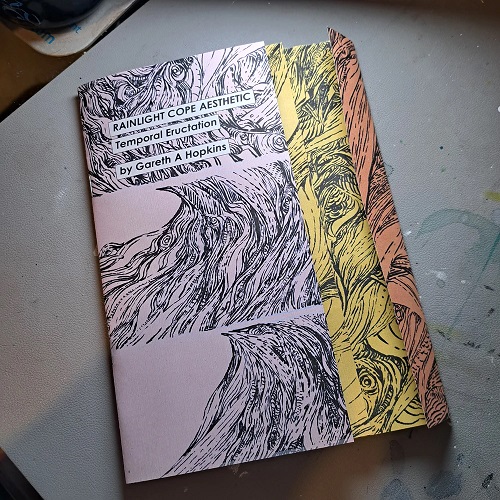
In Rainlight Cope Aesthetic: Temporal Eructation Hopkins uses what he terms as the “idiot fold” to provide a comic that is as playful in its tactile presentation as it is in narrative. The story introduces us to the character of Steve Copeland, a man from whom “the world is slipping out from under.” If Temporal Eructation is intended to pique our curiosity it certainly succeeds. A brief but dryly witty, meta reflection on character purpose and relationship to author its handful of pages forms an immediate connection with the reader for its endearingly flippant and deconstructive approach.
Unlike Hopkins’ more oblique work (which we have certainly covered in some depth over the years at Broken Frontier) he almost resorts to traditional panel-to-panel sequentials here. Almost. Each one-page “panel” is illustrated with a realism that we have rarely seen in his comics over the last few years as he describes Steve’s life of blithe optimism, humdrum pedestrianism, and the dawning realisation from an observation in a charity shop that he may actually be a fictional construct.
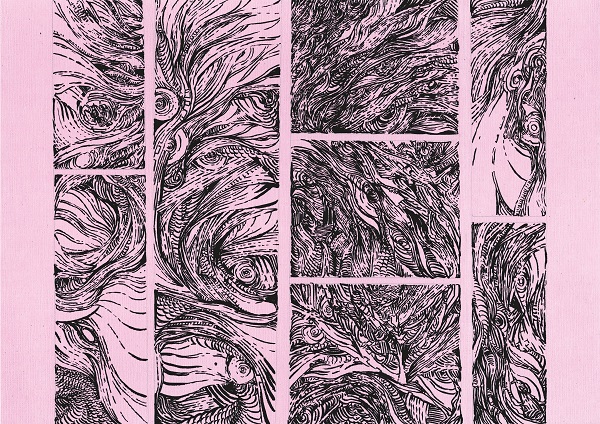
If you’re thinking with a disappointed perception that Rainlight Cope Aesthetic: Temporal Eructation is devoid of the standard abstractedness of Hopkins’ comics then fear not. Here’s where the format comes into play. The comic uses multiple differing page sizes and folds across pages to create a feeling of something other parallel to the main narrative thrust. Coloured pages containing more familiar swirling abstract imagery precede and surround the black and white visuals of Steve’s tale. In amongst these intricate, organic and labyrinthine depths multiple eyes seem to look out at the reader and at events on the page. It creates both a barrier and an indecipherable visual commentary on Steve’s world, perhaps echoing the metafictional elements Hopkins injects into the short story.
The more I read from Gareth A Hopkins the more convinced I am that his importance in moving the form ever forward has had a fraction of the celebration it is due. He’s owed a far wider audience and it’s about time publishers interested in the very best in experimental comics practice gave his output attention and recognition.
Gareth A Hopkins (W/A) • Absolute Collider Press, £5.00
Review by Andy Oliver





